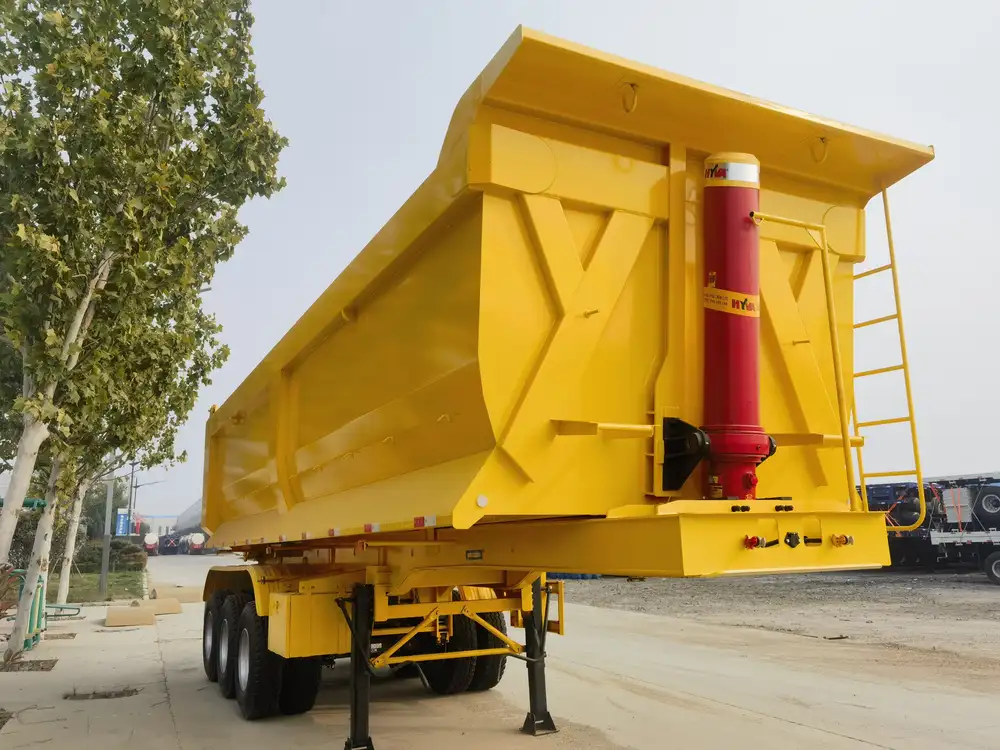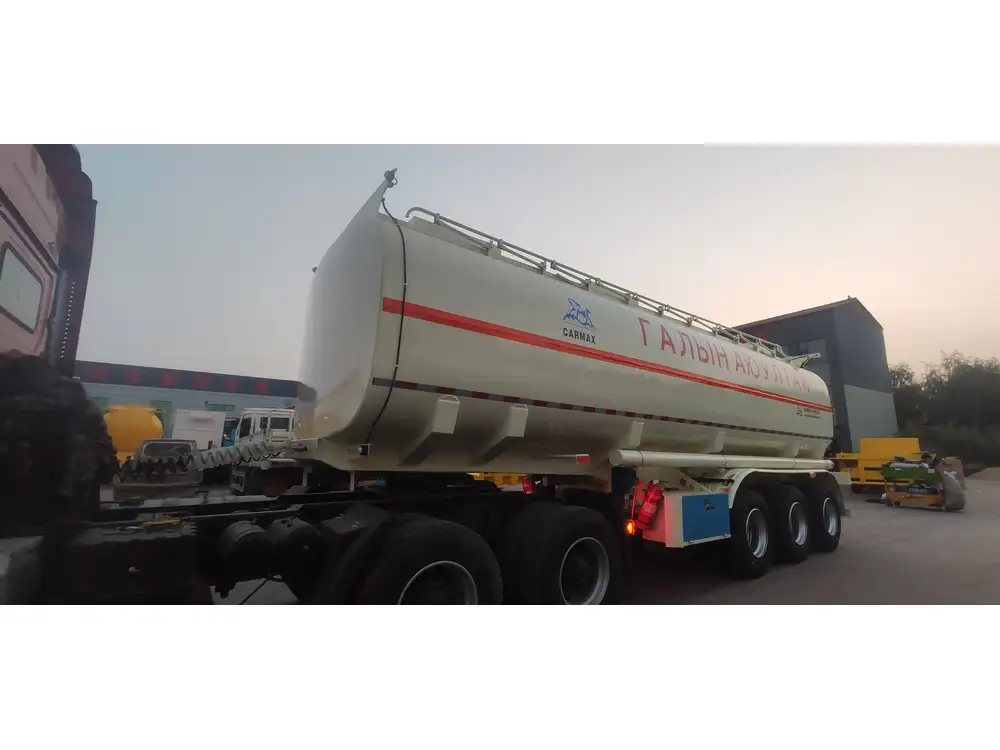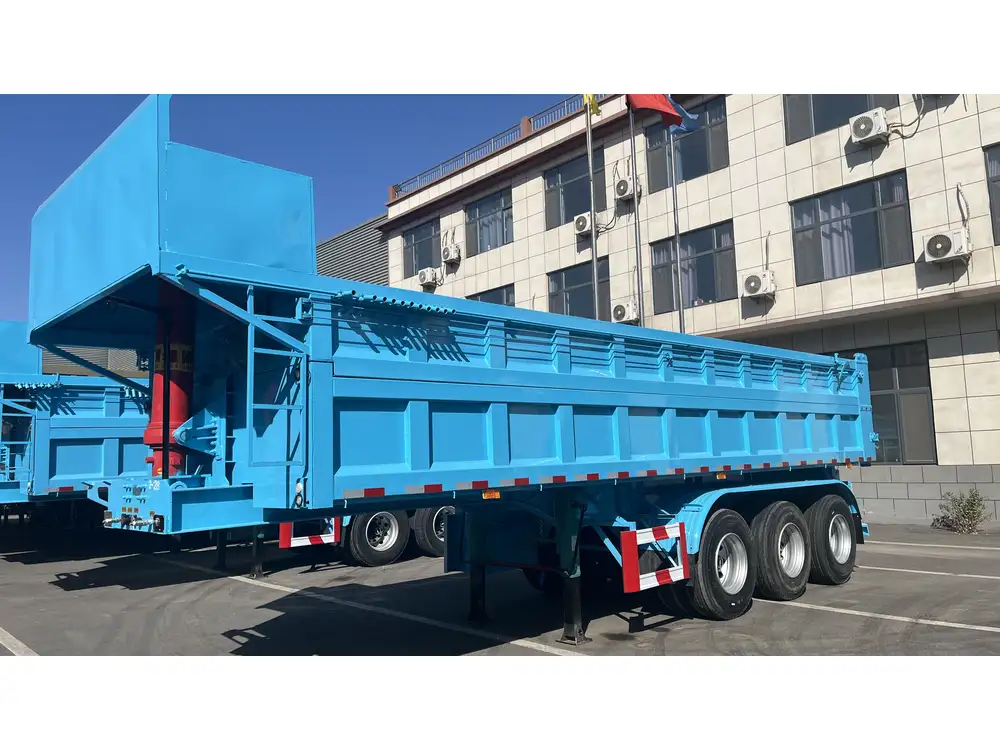Tank trailers are an essential component of the transportation and logistics sectors, specifically designed for the safe and efficient transport of liquids. Whether it’s fuel, chemicals, or food-grade liquids, these trailers deliver versatility and reliability. This article delves into the fascinating world of tank trailers, exploring their design, functionality, and applications, while answering common queries and concerns.
What is a Tank Trailer?
A tank trailer, often referred to as a tanker, is a specialized freight trailer designed for transporting liquids in bulk. These trailers are built with a cylindrical shape, allowing for optimal fluid transport. They are typically equipped with a robust tank structure made of various materials, such as aluminum, stainless steel, or carbon steel, depending on the type of liquid being transported.
Types of Tank Trailers
Tank trailers can be categorized based on their intended use. Here are some common types:
| Type | Description | Applications |
|---|---|---|
| Petroleum Tanker | Designed for transporting crude oil, gasoline, and other petroleum products. | Fuel distribution, refinery logistics. |
| Chemical Tanker | Built to carry hazardous chemicals, often equipped with safety features. | Chemical manufacturing, agricultural products. |
| Food Grade Tanker | Specifically designed for transporting food products, made of sanitary materials. | Dairy, beverage industries, and food processing. |
| Water Tanker | Used for transporting potable water or wastewater for municipal services. | Emergency services, construction sites. |
| Gas Tanker | Transports gases in liquid form under pressurized conditions. | Industrial gas supply, cryogenic applications. |

Key Components of Tank Trailers
Understanding the components that make up a tank trailer can help in grasping its functionality and safety measures:
- Tank: The primary structure of the trailer that stores liquids, often designed to prevent corrosion and contamination.
- Baffles: Internal partitions that minimize sloshing of the liquid during transport, increasing stability.
- Manhole Covers: Provides access to the tank for loading and unloading while ensuring a secure seal to prevent leaks.
- Pump Systems: Some trailers come equipped with pumps that assist in loading and unloading the liquid.
- Valves: Control the flow of liquid in and out of the tank, ensuring efficient operation.
- Chassis: The frame supporting the tank and its accessories, usually made of heavy-duty steel for maximum strength.
- Axles and Wheels: Designed to support the load and provide mobility, often incorporating advanced suspension systems for smoother transportation.
Safety Standards and Regulations
Transporting liquids poses inherent risks; therefore, tank trailers must adhere to safety regulations to mitigate these risks. Agencies such as the Department of Transportation (DOT) in the U.S. enforce strict guidelines:
- Material Standards: Requirements for the materials used in tank construction to ensure they can safely hold and transport specific liquids without leakage.
- Testing and Inspection: Regular inspections are mandated to ensure that all components remain intact and functional.
- Labeling and Marking: Adequate labeling is necessary to communicate the nature of the transported liquid and any associated hazards.
In-Transit Safety Features
Modern tank trailers are equipped with various safety features including:
- Pressure Relief Valves: To prevent tank rupture in case of pressure build-up.
- Emergency Shut-Off Valves: Quickly halts the flow of liquid in emergencies.
- Tilt Indicators: Monitor the angle of the trailer, ensuring it doesn’t exceed safe limits.

Advantages of Using Tank Trailers
Opting for tank trailers offers myriad advantages for businesses in diverse sectors. Here are key benefits:
Efficient Liquid Transportation
Tank trailers maximize the amount of liquid transported in a single journey, reducing the number of trips needed and thus saving time and fuel costs.
Versatility in Liquids Transported
Thanks to different designs and materials, tank trailers can be utilized for a wide array of liquids, from hazardous chemicals to food products, making them invaluable across industries.

Enhanced Load Stability
The baffle systems and specialized chassis design allow for safe handling, reducing the risk of spills and accidents during transport.
Regulatory Compliance
Many manufacturers ensure that their tank trailers meet or exceed industry regulations allowing for smoother logistics operations and avoiding costly penalties.
Considerations When Choosing a Tank Trailer
Selecting the right tank trailer requires careful consideration of various factors, including:

Type of Liquid
Understanding the chemical properties and viscosity of the liquid to be transported will dictate the type of tank trailer needed. For example, food grade liquids require sanitary, non-reactive materials that meet health regulations.
Volume Requirements
Assessing the volume of liquid that needs transportation helps in determining the size and capacity of the tank trailer. Larger operations may benefit from high-capacity tankers while smaller operations might require compact models for flexibility.
Distance and Route Conditions
Evaluate the transportation route, considering factors like road conditions, urban versus rural transport, and distance, to identify optimal trailer specifications.

Budget
Establish a budget not just for purchasing or leasing a tank trailer but also taking into account maintenance, inspections, and insurance costs.
Environmental Compliance
For businesses focused on sustainability, engaging with a manufacturer that offers eco-friendly options or technologies can align with corporate objectives.
Innovations in Tank Trailer Technology
The tank trailer industry is continually evolving with the advent of technology. Some notable innovations include:
- Smart Tank Trailers: Equipped with IoT devices that monitor conditions within the tank, providing real-time data regarding pressure, temperature, and liquid levels to enhance safety and efficiency.
- Lightweight Modifications: Advancements in materials science have led to lighter and more durable tank trailer designs, improving fuel efficiency and cargo capacity.
- Automations Systems: Automated loading and unloading systems streamline operations, reduce human error, and enhance safety.
- Telematics: Tracking technologies that allow logistics companies to monitor trailer positioning and performance metrics in real-time, improving operational efficiencies.

Future Trends in Tank Trailers
As industries evolve, so too does the need for innovative solutions within the tank trailer sector. Here are emerging trends to watch:
- Sustainability: Increased emphasis on green logistics is driving manufacturers to develop more eco-friendly trailers and operations.
- Regulatory Adaptations: Compliance with stringent safety and environmental regulations is prompting upgrades in design and materials.
- Digital Integration: Enhanced connectivity and data analytics will shape the next generation of tank trailers, optimizing logistics and operational management.
Conclusion
Tank trailers play a crucial role in the transportation and logistics sectors, facilitating the safe and efficient movement of liquids. Their design, technology, and adaptability cater to various industries, from petrochemical to food services. Understanding the intricacies of tank trailers can lead to informed decisions, offering businesses the chance to enhance their operations while maintaining compliance with safety and regulatory standards.
Step into the world of tank trailers equipped with comprehensive knowledge, awareness of market innovations, and a clear understanding of your transportation needs to elevate your operational efficiency and ensure compliance.



